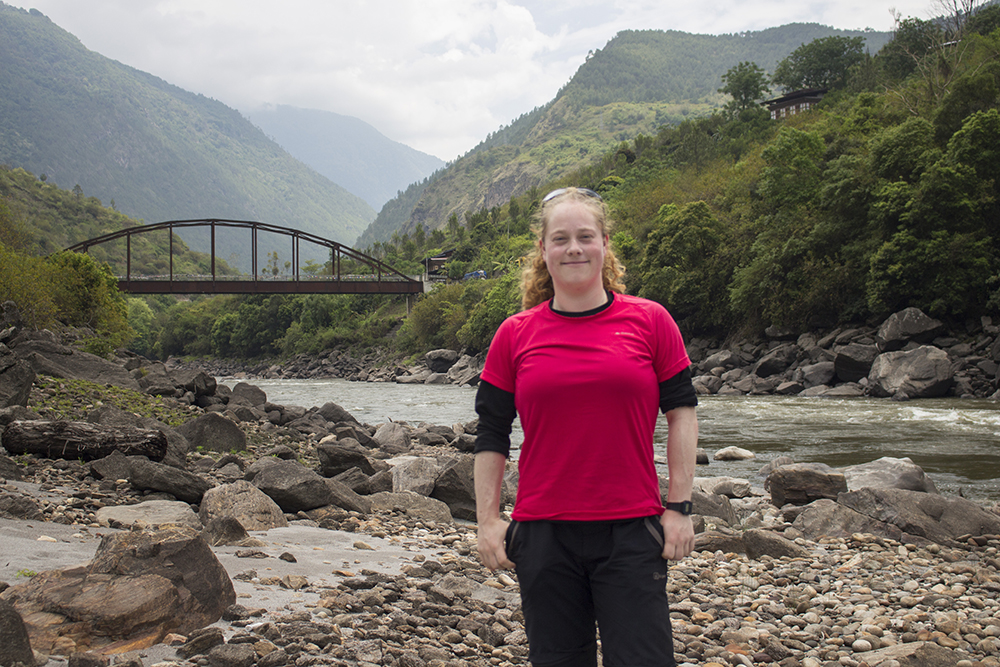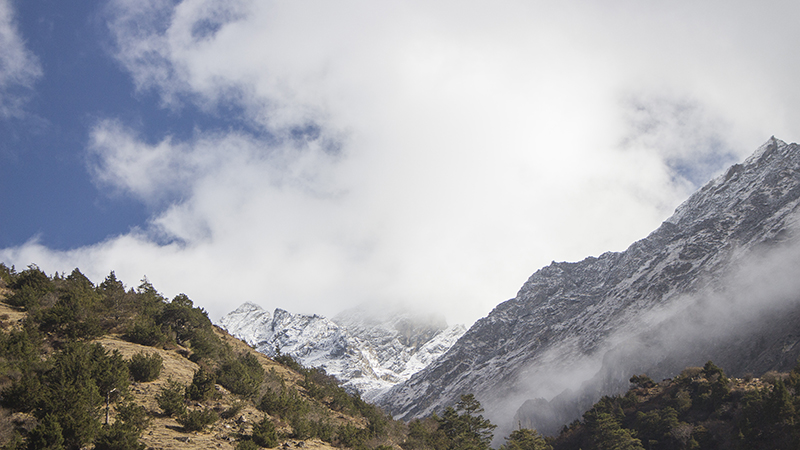 Stacy at Tangmachu beach, eastern Bhutan.
Stacy at Tangmachu beach, eastern Bhutan.
Mountain belts represent areas of the earth’s crust that have been distorted by geological processes, been buried at depth and then brought back up to the surface. During this time the rocks are squeezed and deformed and sometimes melted at high temperatures and pressures. The presence of molten rock is important as it has a dramatic effect on the strength of the mountain belt, making it soft and weak and allowing the crust to move and almost ‘flow’ against the effect of gravity. Understanding how and when the rocks changed from being buried to being brought back to the surface is important for understanding how mountain belts evolve over time.
 These snow-capped peaks in north-western Bhutan now lie 6000m above the earth's surface, but they used to be 10's of km below the earth's surface.
These snow-capped peaks in north-western Bhutan now lie 6000m above the earth's surface, but they used to be 10's of km below the earth's surface.
To investigate the processes that occurred in the heart of mountain belts, we can look at granite, the solidified remains of molten crust. My research involves looking at granites throughout the Himalaya, but particularly in Eastern Bhutan.
 Dramatic topography in the Dangme Chu river valley, eastern Bhutan.
Dramatic topography in the Dangme Chu river valley, eastern Bhutan.
By looking at these rocks in the field, collecting samples and looking at them under a microscope, I can start to unravel how these rocks began to melt, and what reactions were occurring between minerals at the time. By carrying out chemical analyses of the rocks, involving techniques such as firing lasers at certain minerals, I can gain precise information about when the granites formed, some 30 to 40 million years ago. These analyses can also provide us with detailed information about the temperatures and pressures the rocks experienced. So by investigating the rocks at a very small scale I can then identify processes happening at a larger scale, and ultimately understand the dynamic evolution of the Himalayan mountain belt.
 Small-scale lenses of granite (white rock) formed from the melting of the surrounding schist (darker rock).
Small-scale lenses of granite (white rock) formed from the melting of the surrounding schist (darker rock).



Rate and Review
Rate this article
Review this article
Log into OpenLearn to leave reviews and join in the conversation.
Article reviews